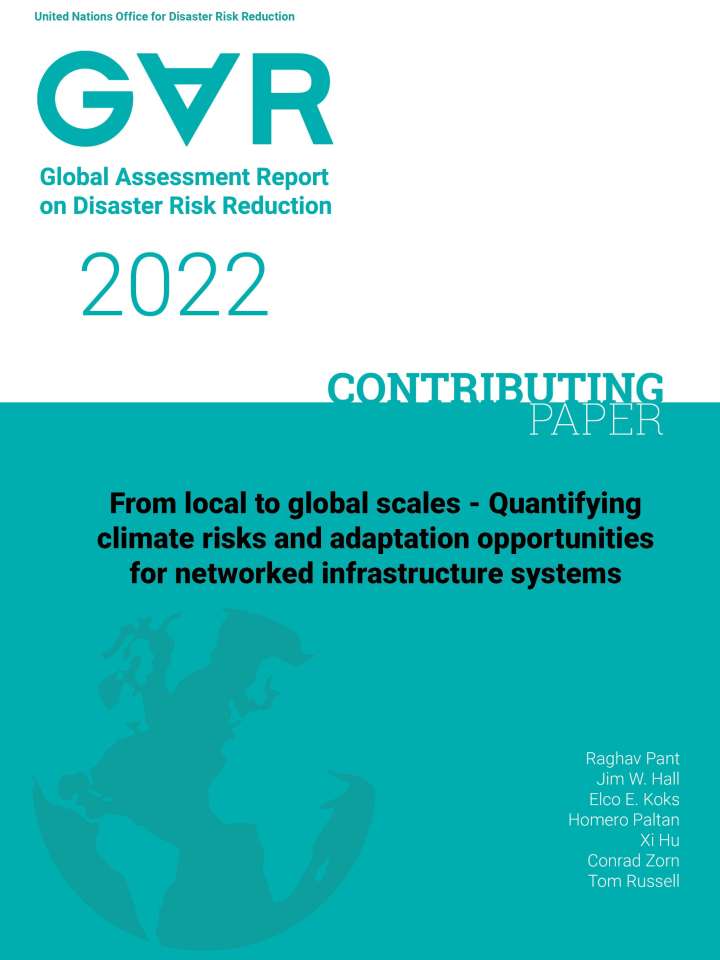From local to global scales - Quantifying climate risks and adaptation opportunities for networked infrastructure systems
This contributing paper discusses the relevance of the methods and case studies in informing global, national and local policymakers and decision-makers who are involved in understanding climate risks and adaptation needs for infrastructures. Investments into infrastructures of energy, transport, water, telecoms, and waste are key to meeting several sustainable development goals and targets set by the Sendai Framework for Disaster Risk Reduction. However, as these investments are being made, ever increasing climate risks threaten existing and new infrastructures, and have the potential to set back development goals by years. there is a need for understanding and quantifying systemic network risks to strengthen climate adaptation decision-making. There are rapid technological developments that are enabling measurement and assessment of systemic risks and adaptation options for infrastructure networks exposed to extreme climatic hazards, from local to global scales, which this paper reviews.
The studies presented in this paper aim to highlight existing research and further opportunities, for national governments and climate adaptation planners across multiple sectors, to improve and enrich bottom-up infrastructure risk analyses with top-down climate assessment tools. Apart from quantifying very complex and interesting results, its value goes beyond a purely academic/technical exercise which influences decision making and engages different stakeholders. It is critical that focus areas continue to be addressed and be developed to for future climatic risks to infrastructures. Realizing opportunities to continue to adapt and protect infrastructures in the face of climate change will be critical to build the much-needed resilience for a sustainable.
